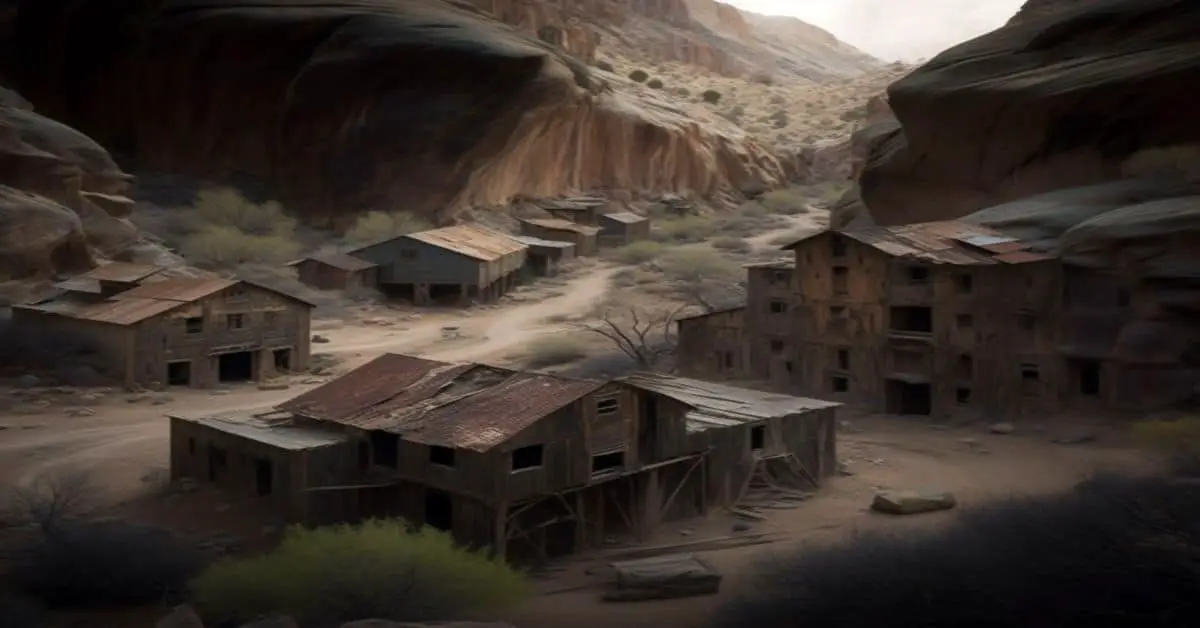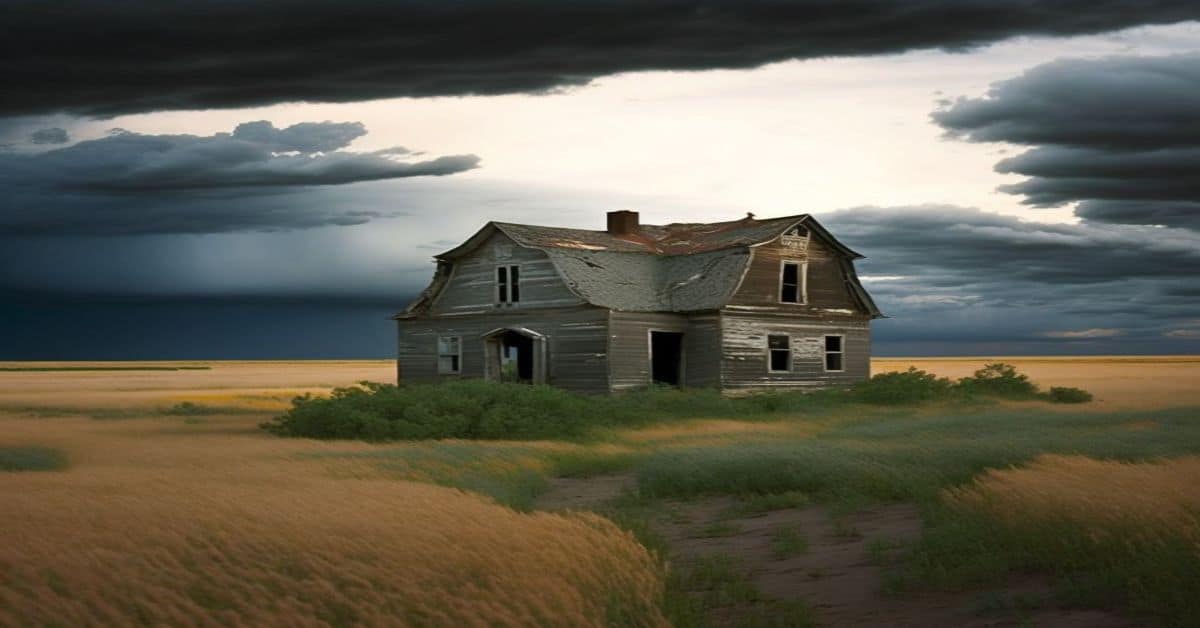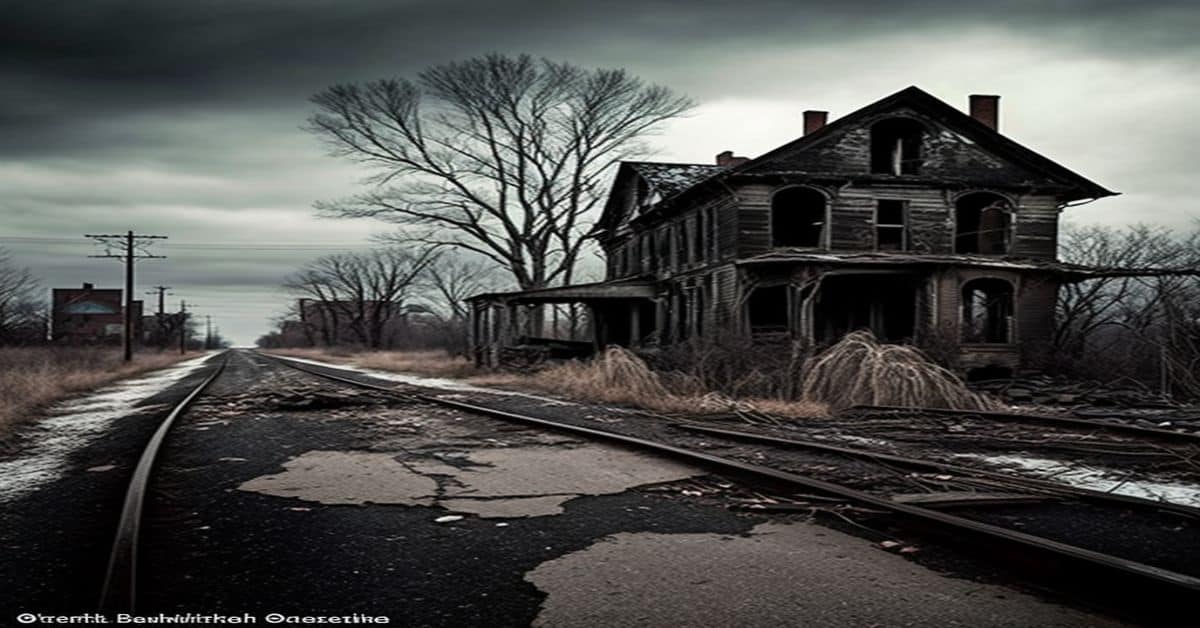Lobo, Texas was once a bustling agricultural community that thrived in the early 1900s. However, as time passed, the town’s fortunes began to decline, and Lobo was eventually abandoned and forgotten.
For decades, the town stood as a ghostly reminder of a bygone era, with its buildings and streets slowly crumbling away in the harsh Texas sun.
Recently, a group of desert-loving individuals have taken on the challenge of breathing new life into Lobo and transforming it into an artistic haven. Their goal is to create a space where individuals can express themselves in various ways, whether through music, art, or performance.
This article will delve into the history of Lobo, explore the reasons behind its decline, and highlight the exciting new chapter of its reincarnation as an artistic community.
Key Takeaways
- The decline of Lobo was due to the high cost of irrigation and unprofitable cotton farming.
- Revitalization efforts have been focused on transforming Lobo into an artistic haven through sustainable development projects and community involvement.
- An annual music, art and performance festival has been held in Lobo since 2003, attracting over 3,000 attendees yearly.
- The lessons learned from the decline of Lobo include the importance of balancing economic development with environmental considerations and the dangers of unsustainable farming practices.
History of Lobo
Lobo, previously a steam engine water stop, depot, and livestock loading pens, experienced a small agricultural boom during World War I and following World War II, primarily in cotton farming. The land promoters brought settlers to the area and started drilling water wells to irrigate the crops. However, the cost of irrigating exceeded the income, and Lobo rapidly declined.
Cotton farming was the principal crop during the agricultural boom in Lobo. The area was suitable for growing cotton due to the warm winter and hot summer climate. However, the high cost of irrigation led to the town’s decline.
The agricultural boom was short-lived, and the decline of Lobo was rapid, leaving behind many abandoned and occupied original buildings.
Lobo’s Decline
The decline of the small agricultural boom in Lobo was caused by the cost of irrigating crops exceeding the income.
Cotton farming was the principal crop in the area, and the demand for irrigated cotton led to an increase in the number of water wells drilled.
However, the cost of drilling and maintaining these wells and the cost of pumping and distributing water made the cotton farming business unprofitable.
The decline of the agricultural industry in Lobo led to a rapid decline in the population, which eventually turned the town into a ghost town.
The few remaining residents could not sustain the community, and many of the original buildings were left abandoned.
The decline of Lobo serves as a cautionary tale about the dangers of unsustainable farming practices and the importance of balancing economic development with environmental considerations.
Revitalization Efforts
Currently, the annual music, art and performance festival held in Lobo has attracted over 3,000 attendees each year since it began in 2003. This event has become a platform for local and regional artists to showcase their talents and for the community to come together and celebrate.
In addition to the festival, there have been efforts to revitalize Lobo through sustainable development and community involvement. Some of the sustainable development projects include installing solar panels on buildings, using rainwater harvesting systems, and promoting organic farming practices.
Community involvement has been key to the success of these projects, with local residents and volunteers working together to restore and maintain the town’s infrastructure. Through these efforts, Lobo is slowly but surely becoming a thriving artistic haven, attracting visitors and artists worldwide.
Frequently Asked Questions
What is the cost of attending the annual music, art and performance festival in Lobo?
The cost and accessibility of attending the annual music, art, and performance festival in Lobo, Texas is not provided on the town’s website. More information may be available through contacting the festival organizers directly.
Are there any plans to attract new residents to Lobo?
Is Lobo planning to attract new residents? Community outreach and infrastructure development plans are underway, but no official statements have been made. The focus remains on the annual music, art, and performance festival.
What types of artistic expression are encouraged in Lobo?
Visual and performing arts are encouraged in Lobo, with community involvement in various art projects. The annual music, art and performance festival showcases artistic expression. Lobo aims to become a place where individuals can express themselves in a multitude of ways.
How do the current residents of Lobo sustain themselves economically?
Lobo’s current residents sustain themselves through community initiatives and local partnerships, such as the annual music, art, and performance festival. Despite having no official residents, the town continues to attract visitors and support from outside sources.
What challenges have the three individuals faced during the process of rebuilding Lobo?
The three individuals rebuilding Lobo faced challenges such as lack of funding, limited resources, and remoteness. However, they overcame these obstacles with community support, which enabled them to transform the ghost town into an artistic haven.


